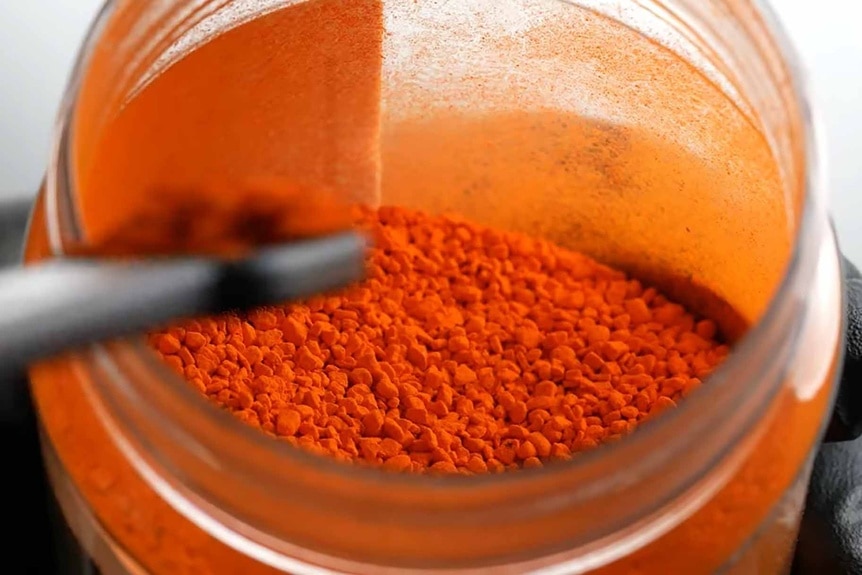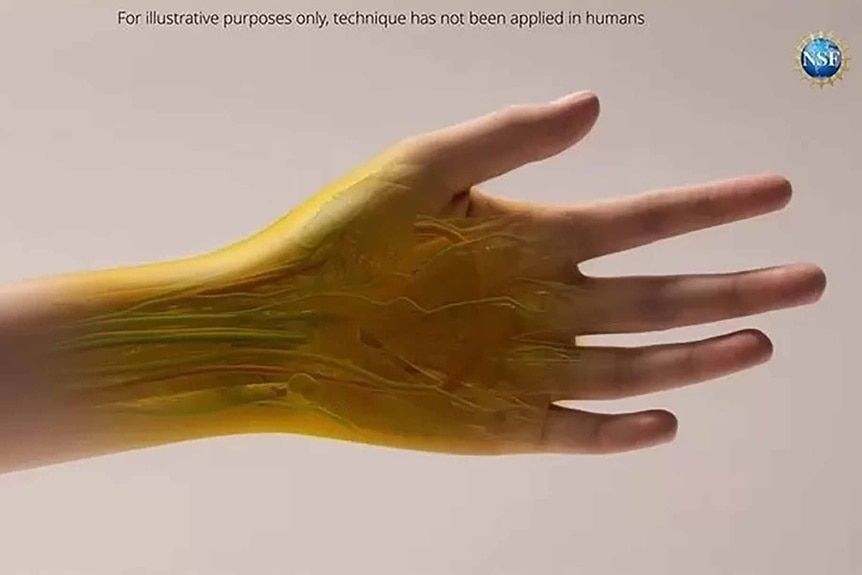Common Food Dye Turns Rat Skin Temporarily Transparent, Revealing Organs, Blood Vessels & More
The same dye that gives nacho chips their color can render rat skin nearly invisible.

What do H.G. Wells and common snack foods have in common? The first imagined a chemical formula capable of turning a person invisible, the second may have pulled that formula off. When Wells first imagined The Invisible Man back in 1897, his protagonist Griffin, the titular invisible man, used cutting edge chemistry to render him totally invisible.
More than a century later, the story was reimagined as Hollow Man (streaming now on Peacock), starring Kevin Bacon as Dr. Sebastian Caine, a molecular biologist who serves as this version’s Griffin. He and a team of scientists are working on biological invisibility for military applications, and as soon as they succeed, things turn south. Same as it ever was.
In Wells’ original tale, Griffin’s chemical cocktail works by changing the refractive index of the body to match that of air. Refractive index is an optical property which refers to the light bending ability of a material. Light bends differently through different materials, and that’s part of how we’re able to see things. It’s also the reason a straw appears to break when it enters water. Despite clean water’s almost transparent nature, it has a slightly different refractive index from air, and you can see that in the way light bounces off the straw and hits your eye.
The same processes are at work when light strikes your body. Our bodies are made of many different materials but we’re mostly water and lipids (fat), two materials with different refractive indexes. They are different enough that as light bounces between molecules of water and fat, it becomes so scattered and reflected that it can’t get through. As a result, our bodies are opaque. Griffin and Dr. Caine use mysterious cutting-edge chemicals to align the refractive indexes of their bodies; in the real world, scientists are doing the same thing with a dye from common snack foods.
The common food dye that turns mouse (and possibly human) skin transparent
Tartrazine was first synthesized in a lab back in 1884 and has since become one of the most widely used dyes in fabrics, cosmetics, and foods. Under its common name, yellow #5, tartrazine provides a vibrant yellow color in everything from ice creams, soft drinks, candies, cake mixes, and nacho flavored chips to hand soaps, shampoos, and more.
Tartrazine makes for a good eyeshadow, but it turns out, if you rub enough of it on the skin in the right way, it might turn you temporarily transparent. In a case of life imitating art, the process works by shifting the refractive index of the skin and allowing light to pass through, according to a recently published paper in the journal Science.
The authors explain that, while counterintuitive, the addition of molecules that highly absorb light in the near ultraviolet and blue regions of the light spectrum improve transparency in nearby wavelengths. “In essence, by causing sharp absorption in the blue region, the refractive index in the red part of the spectrum is increased without increasing absorption,” Marc S. Lavine notes in the Editor’s summary.
Researchers began with an idea, a hypothesis that the addition of the right kind of molecules could raise the refractive index of the water in our bodies to more closely mirror that of lipids. By aligning the way light travels through those two different materials, they reasoned light might pass through the skin and reveal our inner workings. Then they just had to find the right dye, one which is hopefully nontoxic, temporary, and effective. It looks like yellow #5 might be that dye.
Researchers mixed tartrazine in water and applied it to the target tissue, either by massaging it into the surface or through an array of microneedles. The solution was tested on analogs including silica in water and raw chicken breast, before researchers moved on to tests on live mice. After application, the skin, muscle, and connective tissues became transparent, allowing researchers to watch the gut activities of live mice in real time. Tests on the scalp and hindlimb also revealed cerebral blood vessels and detailed views of leg tissues.
There was concern, of course, that adding so much tartrazine to the body might have unintended ill effects. Fortunately, the mice cleared it from their bodies in about 24 hours with little evidence of inflammation or irritation. Continued research into potential negative side effects is needed, but the initial evidence seems to support an effective means of temporarily gazing into the body’s inner machinery.
Because of our comparatively larger bodies and thicker tissues, the process may not quickly translate to human applications. It’s also worth repeating that the potential toxicity of exposure to lots of tartrazine isn’t wholly known, so don’t go replicating any experiments at home. It’s likely that rendering parts of the human body transparent will take some finesse, targeted delivery, and a fuller understanding of the consequences. It looks like partial invisibility is possible though, you just need enough nacho flavored chips.
See Hollow Man with your own eyes, streaming now on Peacock.






























